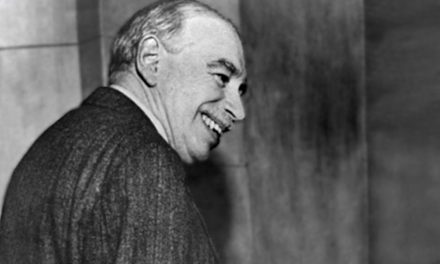It is appalling that for all the discussion and debate on Keynes, there is no mention of what is the single most important concept in his work
Let me start with a disclaimer – I am not a Keynesian in any sense of the term but consider him an important figure in the history of the development of the subject of economics. In my opinion, what is being taught as Keynes’ work is completely mistaken. Not just mistaken but robs his work of the dynamism that informs his work on The General Theory of Employment, Interest and Money (1936). It does seem to me, going by textbooks on Macroeconomics for students in many universities, that Keynes’ principal work has been so diluted that what is taught as Keynes’ work as part of the syllabus on Macroeconomics bears very limited resemblance to this work. For instance, interest rates play a significant, decisive role in any mainstream understanding of macroeconomics but in Keynes’ work, interest rate is not a decision variable at all. All references to his work are about the 1936 book.
There is an inherent dynamism in Keynes’ work as it challenged many of the notions fondly held by what he described as ‘classical economists’ (the definitions vary according to who says it). The primary challenge was to the notion of full employment equilibrium, Keynes arguing that an economy can be in equilibrium at less than full employment. And more important that this was quite normal. In the classical economics that Keynes referred to, the concept of a generalized unemployment was absent; nay, it was anathema. There could be pockets of unemployment but not in the economy as a whole. However, what Keynes saw perplexed him – factories lying idle but workers unemployed, unsold inventories but people dying of hunger. He immortalized this with his expression – the paradox of poverty amidst plenty.
Keynes also grasped a crucial factor – investment decisions (by businesses) are taken in advance of (expectations of) demand. It is these decisions, together with consumer demand of course, which run an economy. Let me just say, although this is implicit, that Keynes deals with aggregates. Businesses will decide based on their expectations which could change with a change in their perspectives of likely outcomes. He called it the aggregate demand function (ADF), quite simply their expectations of revenues at various levels. It is this that will decide the level at which an economy is in equilibrium. Corresponding to ADF is the aggregate supply function (ASF) which represents the minimum cost below which suppliers will not be willing to offer their output. Equilibrium is the balance between ADF and ASF, but Keynes treats ASF as a given because he is dealing with the short-run; it is not a decision making variable. Keynes also takes consumption as a given factor (given short-run). What is decisive in his system is investment, what he describes as the ‘inducement to invest’.
Thus, everything depends on the ADF, which itself is a function of what is the single most important concept in Keynes’ work but which is missing in standard interpretations – the marginal efficiency of capital (MEC), the rates of return businesses can expect at varying levels of output. Keynes recognizes a crucial point – investment decisions are taken today but returns are in the future, which signifies the need for bringing future revenue streams to today’s value, which, in simple terms, means discounting at a certain rate. Thus, in Keynes’ hands MEC becomes a rate of discount, but not any rate of discount but that rate which equates to the minimum supply price of capital, quite simply the minimum rate of return below which suppliers of capital will not be ready to supply. Students of finance can easily recognize this as the internal rate of return. As long as the MEC is greater than the supply price of capital, investment will continue to be made and stop when the two are equal.
The crucial point here is that the MEC can change when expectations of businesses change and they either invest more or disinvest. This induces the dynamism in Keynes’ system which is completely lacking in any of the tepid discussions in textbooks on Macroeconomics. What dominates the discussion in textbooks as well as in the business media is interest rates. Actions of central banks, especially, the US Federal Reserve Bureau, is are among the most watched in the world. Every word, its nuances are analysed to infer what they could mean for changes in interest rates. And interest rate plays absolutely no role in Keynes’ system. He takes it as a given because he is talking about the short run. The irony today is the obsession with interest rates is precisely because of the interest in the short run.
Clearly, we have come a long way since 1936 in many respects but we will address them in a later post.
Takeaways
There is an inherent dynamism in Keynes’ work
Business expectations play a central role in the Keynesian system
Marginal efficiency of capital is the most decisive concept





